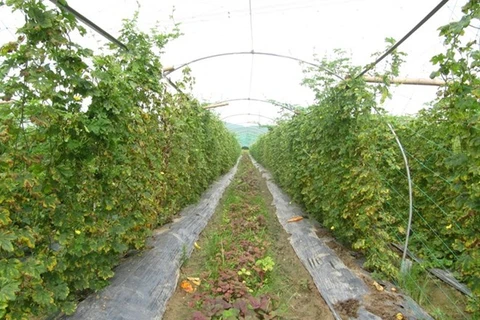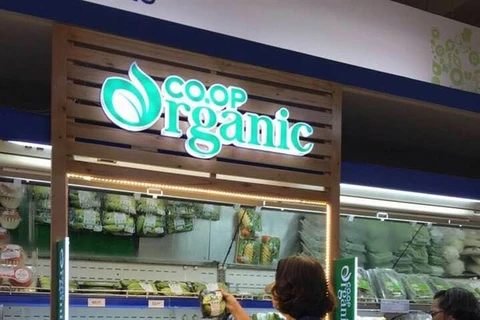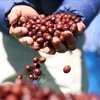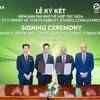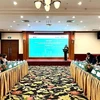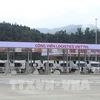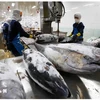 A member of the Binh Thuan-based Hoa Thanh Agricultural Service Cooperative guides other farmers in effective pesticide use (Photo: VNA)
A member of the Binh Thuan-based Hoa Thanh Agricultural Service Cooperative guides other farmers in effective pesticide use (Photo: VNA) Hanoi (VNA) – Vietnam’s plant protection product market is valued at 1 billion USD a year, but the country is still heavily dependent on imports.
The Ministry of Industry and Trade estimated that in the first five months of the year, Vietnam imported 400 million USD worth of pesticides and materials, a 41 percent year-on-year increase. In May alone, the import value was 98 million USD.
The ministry said 53 percent of the total imports were from China, and the rest from Thailand, the Republic of Korea, India and Germany.
Between 2012 and 2013, imports of pesticides surged from 55,000 tonnes to 112,000 tonnes. In 2016, the amount was 100,000 tonnes and this figure shows no sign of abating.
Hoang Trung, director of the ministry’s Plant Protection Department, said in the past five years, Vietnam annually spent around 500 million USD to import pesticides and materials from China. Of the total imports, 48 percent were herbicides (19,000 tonnes), insecticides accounted for 32 percent (16,400 tonnes) and growth regulators about 900 tonnes.
Trung said 99 percent of the pesticides in Vietnam were imported, excluding some domestically produced biological drugs and herbs.
Department data shows about 2,000 plant protection products are used in the country, traded by more than 200 businesses. Nearly 100 processing plants meet half of the total demand for products with a capacity of 30,000 tonnes to 40,000 tonnes a year. Vietnam also has about 30,000 agents providing plant protection products.
Up to 40 percent of some 100,000 tonnes of plant protection products imported into Vietnam are bottled for export to 40 markets, which bring in a sizeable turnover. The remaining 60 percent are used in Vietnam.
Le Thi Khanh Hoa, PR Manager of Syngenta Vietnam Company specialising in researching and developing products, told online newspapers that it took time to produce a new plant protection product.
It often take 10 years to 12 years to research, develop and register, together with 25 years of studies in laboratories and fields, as well as assessment of effects on the environment, people and harmful organisms, to launch a new plant protection product. The spending reaches around 260 million USD, Hoa said.
In addition, it has been a challenge for both the Government and plant protection producers to promote the use of the products in more than 10 million small-scale farming households around the country.
Currently, counterfeit and poor quality plant protection products are being sold, affecting the health of firms and farmers, as well as the quality of agricultural products. The Government should pay more attention to this issue, and supervise and enforce strict measures to fine violators, she suggested.
The high investment and weak management have resulted in counterfeit goods flooding the market. On the other hand, the lack of policies and mechanisms to promote investment in this field has been a barrier for local producers who prefer the higher profits of imports rather than producing products themselves.
However, experts say that as the Government focuses on increasingly harmful organisms and urges local producers to improve productivity, the investment in developing plant protection products will provide opportunities for the local sector to become more active in pest management. -VNA
VNA


